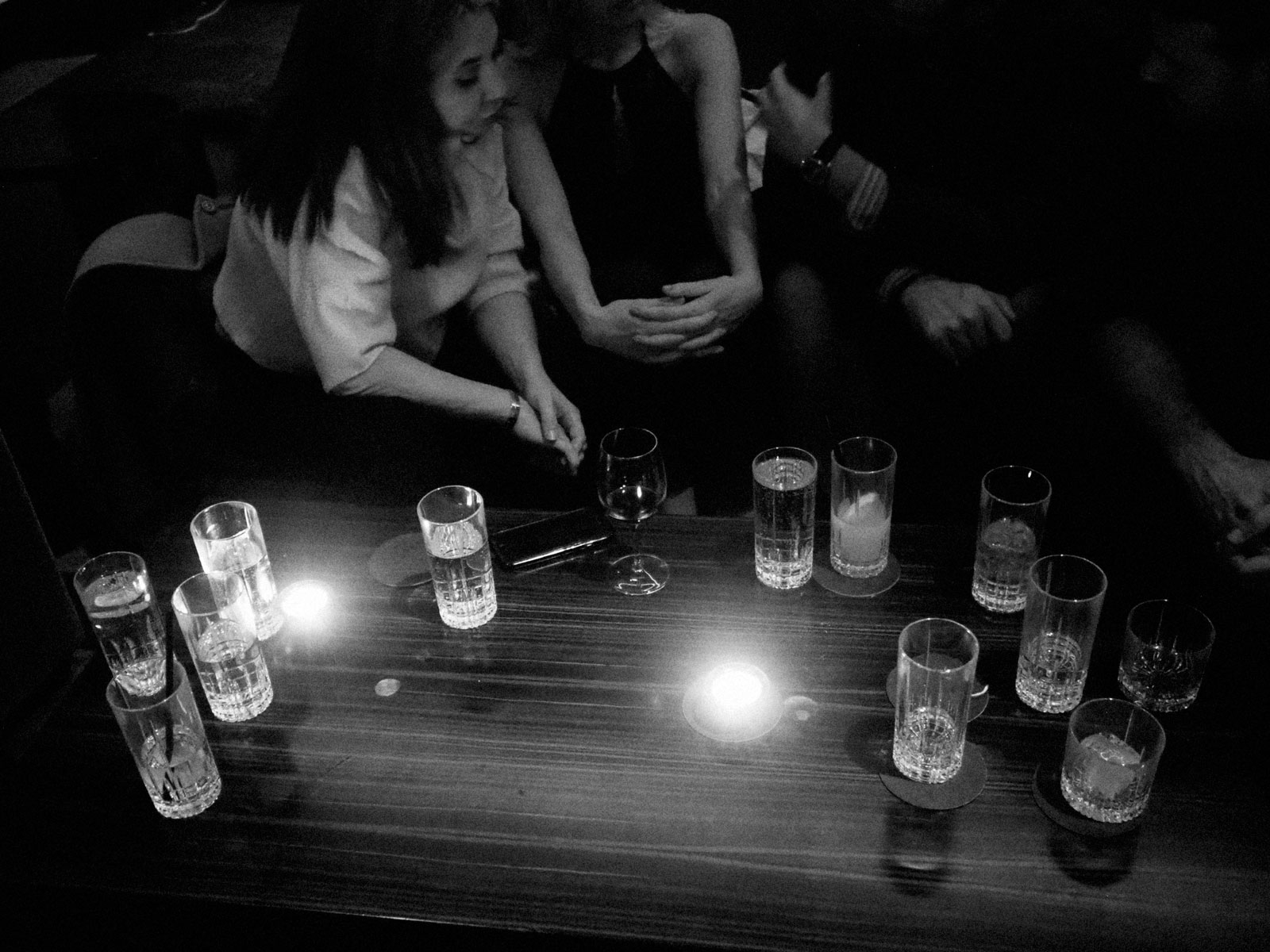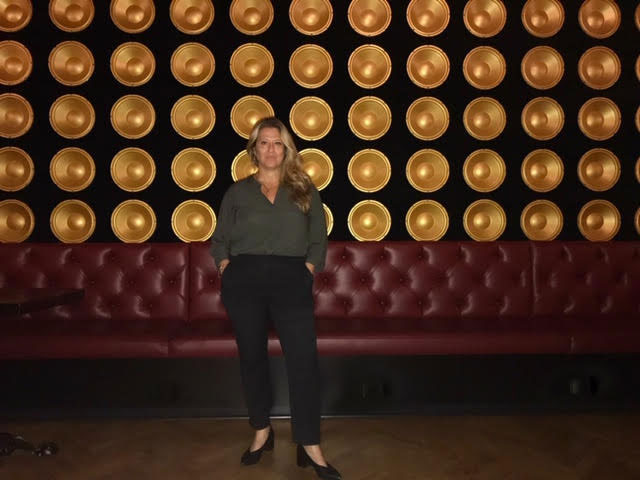The city at night: it can be an escape, a place to lose yourself, a place to find your people. “We become community centers if we do a good job,” said a longtime bar owner from Williamsburg. “We’re the places people go during a blackout.” There’s also the vomit, the noise, the grime. “My kids have to step over drunken people and urine and all of that on Saturdays and Sundays,” complained a woman who lives around the corner from a strip of bars in Prospect Heights. “It’s horrible.” The comments were directed at Ariel Palitz, who has spent the past eight months on a survey of sorts, stopping at points across the city to assess the needs, and complaints, of New Yorkers who live, work, and play in the city’s nightlife.
In March, Palitz was appointed as the senior executive director of New York City’s Office of Nightlife, the city’s first. She describes herself as a liaison between the city agencies, nightlife businesses, owners, residents, employees, patrons, and entertainers. Her colleagues call her the night mayor.
“It’s about streamlining red tape, having city agencies work in concert with each other,” Palitz says, and hearing the needs of everyone who likes to venture out after dark. Without forgetting those who don’t: “The latest I’ve been out in three months was at the St. George Theatre, seeing the band Chicago,” a middle-aged borough rep in Staten Island proudly said, smiling. “I was home by 11:30—in bed, done!” Judging by practically everyone else who has come to speak with Palitz, though, it’s also about job security, staying safe, hassles with the cops, hassles with the customers, hassles with the rent. The city at night starts to look like the city during the day.
At one recent stop, a town hall at a theater off Prospect Park, Palitz and a panel of staffers from city agencies heard from the woman who lived in Prospect Heights, who said the bars’ patrons had made a habit of wandering down the street when the bathroom is full. “We’ve gone to the police. We’ve called 311. We’ve gone to the Fire Department. I don’t know what else to do.”
“I hear you,” Palitz said. “There are good operators and bad operators, for sure. And we are speaking to the Departments of Sanitation and Transportation and even e-hail companies on how we can prepare for the effects of nightlife the day after, so that when you wake up you barely know it was there. Because—”
“It’s not at night. It’s during the day.”
“Well, it’s sometimes the residue from the night. Right?” Palitz asked. The woman shook her head.
“Oh. They’re peeing during the day? Okay.” Palitz directed the woman to an office liaison.
Another member of the audience, a drummer who lived nearby and had complained about noise (“It’s over 98 decibels, I’ve measured!”) followed up: “There are three bars clustered there, and I’m wondering if that somehow violates the 500-foot rule,” a statute on the books of the State Liquor Authority, regulating the proximity of venues serving alcohol. “If somebody throws up or has sex on our stoop—on my stoop—we don’t know what bar they came from. And, of course, it legally probably doesn’t matter,” he said. “So I hope the 500-foot rule could be enforced.”
“A multi-agency issue!” Palitz said. “Thank you very much.”
When Mayor de Blasio announced the creation of the office, last fall, he received applications from a tour DJ for Lady Gaga; a nightclub manager who, in a self-promotional video, called himself “the first white rapper” (“well, one of the first,” he qualified); and a crew of aspiring actors, artists, real estate entrepreneurs, and aging club kids. Marky Ramone, former drummer for the Ramones, spoke at the ceremony where the mayor signed the office into law, and the Harlem hip-hop legend Kurtis Blow sits on its advisory committee. At the time, Palitz, forty-eight, had sold an East Village nightclub she operated, Sutra Lounge, and was working as a hospitality and real estate consultant.
“I’ve worked in probably every job in nightlife you can imagine,” she said. “I owned my own nightclub for ten years, I served on a community board, on the liquor licensing committee, and I live above a bar.”
One recent afternoon, Palitz stopped by the Williamsburg Hotel to meet with Mirik Milan, who was the night mayor of Amsterdam for six years, and Lutz Leichsenring, an executive board member of the Clubcommission, an organization that helps oversee nightlife in Berlin. “There are more than forty people now doing this, from London to Sydney to Latin America,” Milan said, “but sometimes they sit inside government and sometimes they sit outside, with public-private funding.” In New York, the idea was championed by a city councilman who saw some of his favorite bars and smaller music venues close, and others receiving little help when threatened by rising rents or trouble complying with city codes. (In 2005, Palitz’s Sutra Lounge was known as the bar responsible for the most noise complaints in Manhattan, and joining the local community board to meet neighbors, Palitz has told the Post, is “actually what politicized me.”) In other cities, the job—and the night—has expanded beyond drinking and dancing: London, for example, has fewer night workers in entertainment than in transportation or health care.
Advertisement
Berlin, Leichsenring explained, has been doing this kind of work for nearly eighteen years. “That means we have budgets, we have ten people in the office. We just got granted one million euros to do soundproofing in neighborhood venues, to build walls and stuff like that. And we launched a new law which is allowing pop-up raves—basically, making illegal raves legal.” He was in New York last spring, on a research trip, when Palitz’s appointment was announced. “I was probably the first person she officially met.”
“Even in this country, we’ve had one or two conference calls with San Francisco, or Austin, or Seattle, where we can share ideas,” Palitz said. “We have a group email.”
“In Amsterdam, we installed twenty-four-hour licenses for some clubs,” Milan said. “The first time we came up with this idea, everybody was like, Well, this is never going to happen. City residents groups in Amsterdam are very strong. I think you call them community boards?” He looked at Palitz, then continued: “We didn’t give them out to every venue, just a few of them. And, of course, some are raving nightclubs that open on Friday and close on Monday, but they all have a community purpose, too.” They host markets and community events during the week. “One of the biggest challenges is always to convince people to build this bridge of trust,” he said. “It’s always easier to—”
Leichsenring interrupted: “Complain at the bar?”
“Well, let’s be honest,” Milan said, “a lot of good ideas start in the bar, too.”




